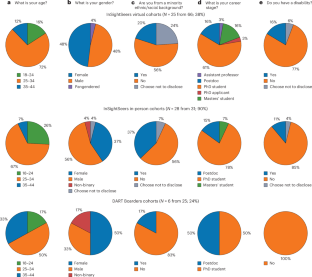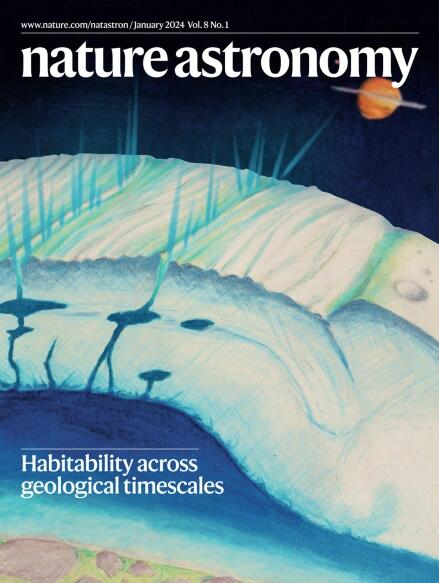Evaluation of the InSightSeers and DART Boarders mission observer programmes
IF 14.3
1区 物理与天体物理
Q1 ASTRONOMY & ASTROPHYSICS
引用次数: 0
Abstract
Encouraging diversity in planetary science requires making a particular effort to bring a broader range of people onto the mission teams that are the backbone of the field. Observer programmes, which offer early-career researchers the chance to embed within a mission team during a science meeting, are one way of doing this. Here we present a quantitative analysis of the effectiveness of two observer programmes: InSightSeers and DART Boarders, linked respectively to the InSight and the Double Asteroid Redirection Test (DART) missions, using a mixture of one-group pre-test/post-test and one-group post-test only evaluation methods, with a total of 56 participants. We find substantial educational value added to participants from both programmes, with particular strengths being the effectiveness of these programmes at providing an introduction to mission teams and international collaborations. This work demonstrates that mission observer programmes can be an effective way of exposing early-career researchers to planetary science missions. Various observer programmes, in which early-career scientists participate in science meetings for NASA’s planetary missions, have been set up in recent years. This Perspective analyses the effectiveness of two such programmes: InSightSeers and DART Boarders.


评估洞察者和DART寄宿员任务观察员方案
要鼓励行星科学的多样性,就必须做出特别的努力,让更多的人加入作为该领域中坚力量的飞行任务团队。观察员计划为早期职业研究人员提供了在科学会议期间加入任务团队的机会,是实现这一目标的途径之一。在这里,我们将对两个观察员计划的有效性进行定量分析:InSightSeers和DART Boarders分别与InSight和双小行星重定向测试(DART)任务相关联。我们发现这两项计划都为参与者带来了巨大的教育价值,尤其是这些计划在介绍飞行任务团队和国际合作方面的有效性。这项工作表明,飞行任务观察员计划可以成为让早期职业研究人员接触行星科学飞行任务的有效途径。
本文章由计算机程序翻译,如有差异,请以英文原文为准。
求助全文
约1分钟内获得全文
求助全文
来源期刊

Nature Astronomy
Physics and Astronomy-Astronomy and Astrophysics
CiteScore
19.50
自引率
2.80%
发文量
252
期刊介绍:
Nature Astronomy, the oldest science, has played a significant role in the history of Nature. Throughout the years, pioneering discoveries such as the first quasar, exoplanet, and understanding of spiral nebulae have been reported in the journal. With the introduction of Nature Astronomy, the field now receives expanded coverage, welcoming research in astronomy, astrophysics, and planetary science. The primary objective is to encourage closer collaboration among researchers in these related areas.
Similar to other journals under the Nature brand, Nature Astronomy boasts a devoted team of professional editors, ensuring fairness and rigorous peer-review processes. The journal maintains high standards in copy-editing and production, ensuring timely publication and editorial independence.
In addition to original research, Nature Astronomy publishes a wide range of content, including Comments, Reviews, News and Views, Features, and Correspondence. This diverse collection covers various disciplines within astronomy and includes contributions from a diverse range of voices.
 求助内容:
求助内容: 应助结果提醒方式:
应助结果提醒方式:


